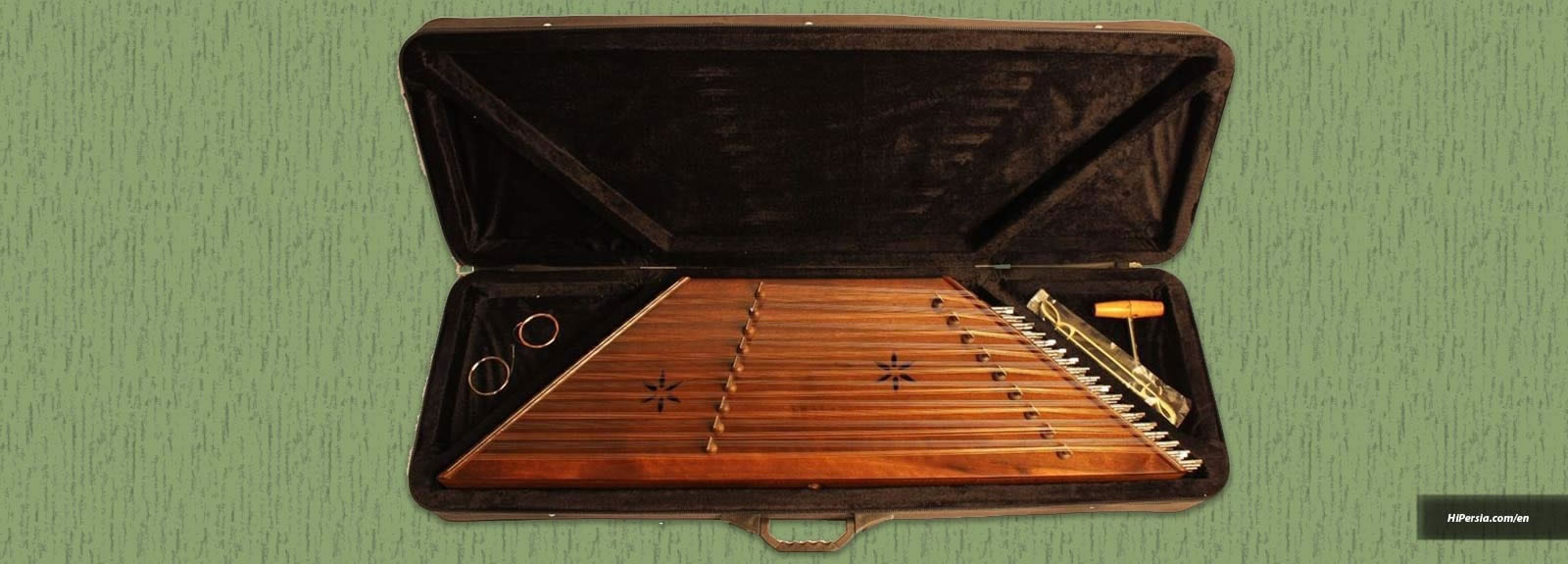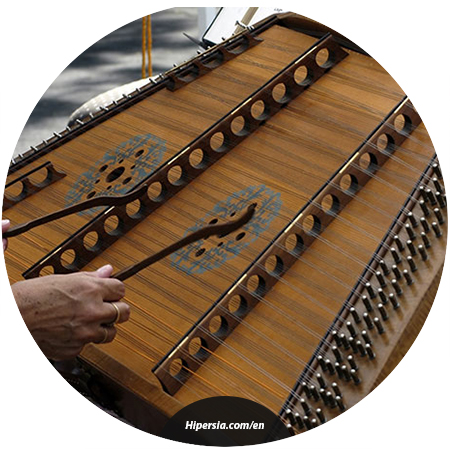



Santoor has a long history in Iran. The oldest surviving evidence of this instrument is from Assyrian and Babylonian stonemasons (559 BC).
Santoor is one of the traditional instruments of Iranian music. Santoor is one of the string-percussion instruments. This is a trapezoidal musical instrument with many strings. Santoor play by two wooden Plectrums usually. Santoor is one of the high-volume range instruments with a sound range of more than 4 octaves. Santoor has a clear and crystalline sound and its solo and accompaniment capability is one of its features.
As mentioned, Santoor looks like a trapezoid. Santoor is placed in such a way that its highest side is close to the musician and the musician plays the sitting or standing instrument. The longest side in this musical instrument is 90 cm, the smallest side (away from the musician) is 35 cm and the diagonal sides are 38 cm. This box is 8 to 10 cm high and all its surfaces are made of walnut and cypress wood. There are two flower-shaped holes on the surface of the santoor, which play a major role in beautifying the softness and clarity of the dulcimer sound. There are two rows of wooden bridges called "Kharak" on the upper level of the Santoor. There are 9 Kharak in each row, which divides the santoor's space into 4 parts. The most common type of Santoor (9 Kharak) has 72 strings.

This instrument, which has a long history in Iran and has probably spread from Iran to other countries under other names, such as "Yan-Qin" in China, "Dalsy Mer" in Eastern Europe, "Butterfly" in England, in Germany and Austria are called "McPar", in India "Santoor", in Cambodia "Phi" and in America "Ziter", which have similarities and differences.






“Oh! Squander not this breath that Heaven hath lent thee, Nor make too sure another breath to borrow!’” Khayam